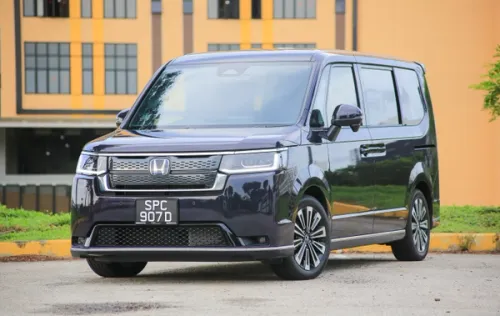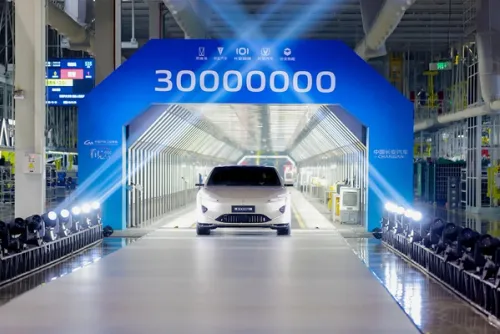Car Buying - The Perfect Car Setup for Singapore Roads
Purchasing and owning the right car in Singapore can be a difficult task for the uninitiated, with a multitude of factors to consider that go beyond your preference of make, model, and colour. In Singapore, we also have to consider our unique driving environment, and car related costs such as road tax and fuel economy. With that, we look at some of the modern technologies that have been applied to everyday cars that would be helpful to our driving situation here in Singapore.

Purchasing and owning the right car in Singapore can be a difficult task for the uninitiated, with a multitude of factors to consider that go beyond your preference of make, model, and colour. In Singapore, we also have to consider our unique driving environment, and car related costs such as road tax and fuel economy. With a slew of new engine, transmission, and fuel economy related technologies hitting the market with every new iteration of a car, there are unfortunately still some rather outdated sentiments making their way around Singapore’s colloquial circles. Sweeping statements like “ Continental cars drink a lot of petrol” or “turbocharged cars consume more fuel” are extremely common, but unfortunately, seldom true. With that, we look at some of the modern technologies that have been applied to everyday cars that would be helpful to our driving situation here in Singapore.
Although turbocharged engines made their debut in performance race cars back in the day, today’s turbocharged engines are more of a nod towards economy than it is towards performance. Obviously, large turbocharged engines in performance cars still exist today, and are far from fuel efficient, but when applied to smaller displacement engines with a low rpm turbo kick in, can make for a very economical setup in Singapore’s urban driving conditions. Small turbocharged engines aren’t about being more powerful overall, but rather, are made to produce a good amount of low end torque to alleviate the negative effects on fuel consumption caused by actions typically associated with poor fuel economy - such as moving off from a traffic light. With a small turbocharged engine, you’d expect the turbocharger to kick in from as low as 1,400 rpm on some cars, allowing you to quickly get up to speed, allowing you to quickly change up to a higher, more efficient gear. Typically, a small turbocharged engine should allow you to get off the line in a rather spritely manner, without having to rev past 2,200 rpm. In contrast, a naturally aspirated engine of comparable power would likely require 2,500 to 2,800 rpm to produce the same amount of torque and acceleration.
Mild hybrid engines share a similar objective with small turbocharged engines, and also seek to alleviate poor fuel economy associated with launching a car from a stationary position. It also aims to produce more low end torque than conventional naturally aspirated engines, but goes about producing the torque in a slightly different manner. To achieve a similar effect as turbocharged engines, mild hybrid engines incorporate the use of small electric motors that work in tandem with the main engine to produce just that little bit more oomph that is required to achieve good low end torque, good pickup, and consequently, lower revs and earlier gear shifts. In fact, many industry leading models today incorporate the use of both mild hybrid technology and turbocharged engines to do this job. There are, however, also mild hybrid applications that are paired to naturally aspirated engines, as seen in the Mazda 3.
Car manufacturers all around the world have been downsizing engines while pairing them with mild hybridisation in a bid to stay more competitive in the fuel economy race, and also to appease the European emissions watch dogs - But aside from just applying mild hybrid technology to their cars, manufacturers have also been downsizing the number of cylinders used in the power plants. 10 years ago, a performance car would typically have 8,19, or 12 cylinders, while regular passenger cars would typically have 4 or 6 cylinders. Today however, performance cars like the upcoming Mercedes-Benz C63 AMG will feature only 4 cylinders. Singing the same tune, manufacturers are starting to apply the concept of using 3 cylinders in passenger cars. There are actually some very clear and compelling advantages for using a 3 cylinder power block, all of which are related to costs and fuel economy. Comparing a 3 cylinder engine with a 4 cylinder engine of the same displacement, you are likely to find that the 3 cylinder is more fuel efficient due to lower frictional loss. They are also likely to be cheaper to build, buy, and maintain due to the lesser number of cylinders, and lastly, they also take up less in the engine bay, which means that a manufacturer could enjoy the versatility of repurposing the extra space toward the cabin for extra legroom. There is a caveat though, that 3 cylinder engines typically work best in smaller displacement applications, and there are downsides. The 3 cylinder typically runs a little noisy, and can sometimes sound a little bit clattery when compared to a 4 cylinder. They are also optimally used in city driving at lower end speeds. From experience, 3 cylinder engines can start to feel a little bit out of breath when accelerating at speeds above 110km/h. All things considered though, a well calibrated 3 cylinder engine will do an absolutely faultless job if you are using the car in and around town, and don’t cover huge distances on the expressways at speed limit-breaking speeds. So all in all, I’d say they are pretty useful for Singapore’s driving environment.
This, I’ll admit, may be a little bit of a contentious point, because the relevancy of a dual clutch transmission in Singapore’s urban driving environment also largely depends on the engine setup. However, if you scrutinise DCTs as a piece of engineering itself, it would be fair to say that when applied to an appropriately sized turbocharged engine, it does the job of providing quick and precise upshifts, ensuring minimal power loss between shifts, and getting the car up to a higher and more efficient gear in as short a time as possible. Apart from that, DCTs are also typically lighter to construction, and can help with weight saving in the car. It is little surprise that more and more manufacturers are shifting toward (pun unintended) the use of DCTs, with cars in the VAG stable pioneering this, with Mercedes-Benz, BMW, Hyundai, and Honda now also jumping on the bandwagon. While DCTs generally have this minor downside of being slightly jerky at carpark speeds, in my opinion, they are still the perfect transmission choice for use in Singapore’s driving environment.
Credits:


Get the Best Price for your used car
from 500+ dealers in 24 hours

- Convenient and Hassle-Free
- Consumer Protection
Transparent Process
With No Obligation








